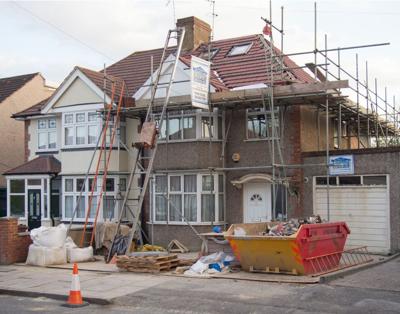
Are you looking to build your dream home? Do you have a piece of land, but you don't know how to start the process? Whether you own rural land and want an affordable home, or you live in a suburban area and want something energy-efficient for your family, you deserve a beautiful home.
In 2022, US single-family home construction expenditures were $404 billion. Buying a home has never been more difficult than it is right now. With rising interest rates and sky-high prices, homebuyers often have to think outside the box to make homeownership a reality.
One of the best ways is to build your own home. To learn more about how to get started with affordable homes built on your land, keep reading!
Determine Your Budget
Knowing how much money you can spend on the project is important. This ensures you can buy the necessary materials and complete the project in its entirety. Consider the cost of the land itself, the cost of construction materials, and any additional costs associated with building a house.
Without a budget, you may find yourself running out of money before the project is finished. Spend some time researching the current market value of potential building materials, permits, and labor. This will ensure that you can make an informed decision when it comes to your budget.
Choose Your Location
It is important to consider access to utilities, transportation, zoning regulations, and the availability of nearby services in the area. It is also important to research the climate and environmental characteristics of an area. This is to ensure that the home being built will not be affected by adverse weather conditions.
It is also important to research the cost of purchasing land in the area, as this will affect the affordability of the home. Choosing the right location is certainly a major factor in new home construction.
Get Necessary Permits
Depending on the location and size of the proposed development, you may need to apply for different permits like zoning, building, or development approval. Once you have obtained the necessary permits, you can begin the planning process.
Have a plan that outlines the individual components of the project. This includes the home layout, landscaping, and any other features you may want to include.
It is important to stay focused on the vision for development. Make sure to work with your local zoning board to ensure that your project meets local codes and regulations to prevent any setbacks.
Find a Builder or Contractor
Look for professionals who specialize in building houses. Also, look at past projects they have completed and ask for references. You may even want to attend a home builders association meeting to meet a local home builder and to request bids for your project.
You may want to check out hollandhomesllc.com, as their experienced team of specialists is dedicated to making sure your project is completed on time and within budget. With their expertise and experience, it is the perfect place to go to get an affordable home built on your land.
Exploring Affordable Homes Built on Your Land
Affordable homes built on your land can be a great way to save money and have a home that you customize yourself. Following these guidelines can help you get started with building affordable homes for you and your family.
Now that you have the tools don't hesitate to start working on your project! Put the plan into action and make affordable housing a reality.




(0) comments
We welcome your comments
Log In
Post a comment as Guest
Keep it Clean. Please avoid obscene, vulgar, lewd, racist or sexually-oriented language.
PLEASE TURN OFF YOUR CAPS LOCK.
Don't Threaten. Threats of harming another person will not be tolerated.
Be Truthful. Don't knowingly lie about anyone or anything.
Be Nice. No racism, sexism or any sort of -ism that is degrading to another person.
Be Proactive. Use the 'Report' link on each comment to let us know of abusive posts.
Share with Us. We'd love to hear eyewitness accounts, the history behind an article.